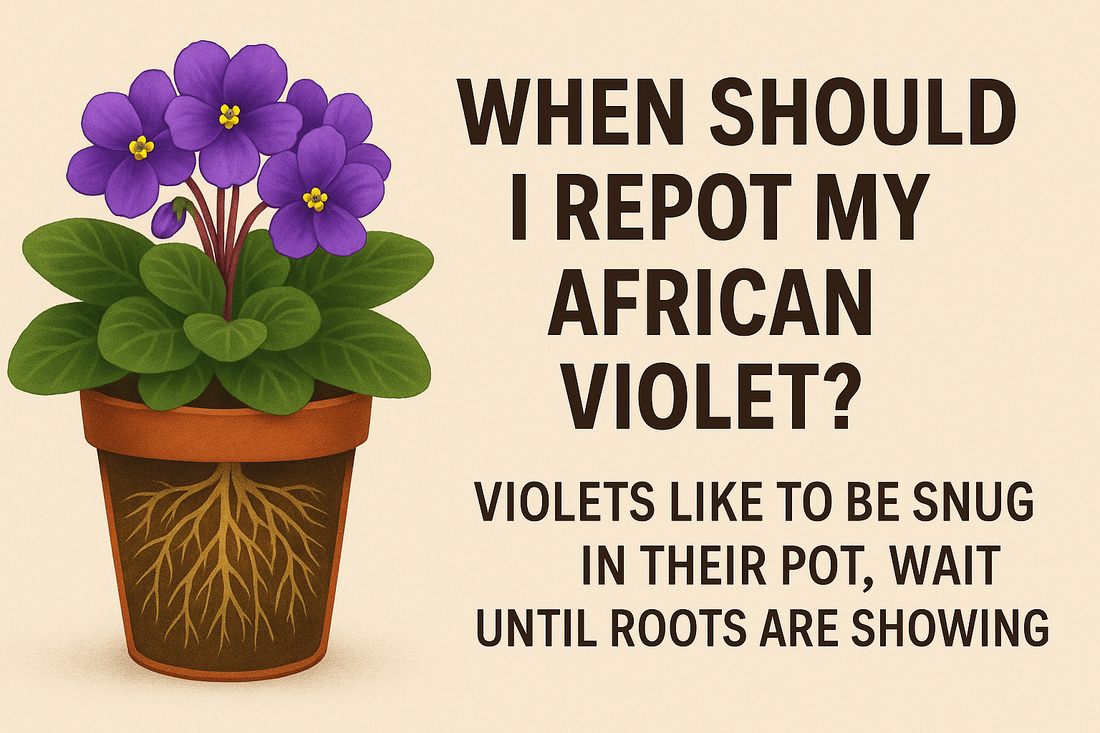African Violets don’t mind being a little snug in their pots, but they do need repotting from time to time to stay healthy and happy. Here are a few signs and general guidelines to help you decide:
🌱 Telltale Signs It’s Time to Repot:
- Neck is forming: If your violet has developed a “neck” or bare stem between the soil and the leaves, it's ready for a fresh pot and a soil reset.
- Soil looks tired: Old, compacted, or crusty soil? That’s a red flag. Violets prefer light, airy mixes—if the soil isn’t draining well or has a white buildup on top, it’s time.
- Growth has stalled: If your violet isn’t blooming or pushing new leaves like it used to, it could be rootbound or sitting in exhausted soil.
- Roots peeking out: If roots are visible through the bottom drainage holes, your violet has likely outgrown its home.
🗓️ How Often Should I Repot?
- Every 6 to 12 months is ideal, even if the plant looks fine. This gives the roots fresh soil and prevents salt buildup from fertilizers.
- You don’t always need to go up in pot size—in fact, African Violets bloom best when slightly root-bound. If you don't see roots on the outer edges of the soil you should stay in the same size pot. Sometimes all they need is a soil refresh and a neck trim.
🌼 Pro Tip:
Always repot after a bloom cycle if you can. Doing it while it’s blooming can stress the plant, though it’s not a deal-breaker. If your violet is in dire need (e.g., root rot or severely depleted soil), go ahead and repot gently—even if it's in bloom.

